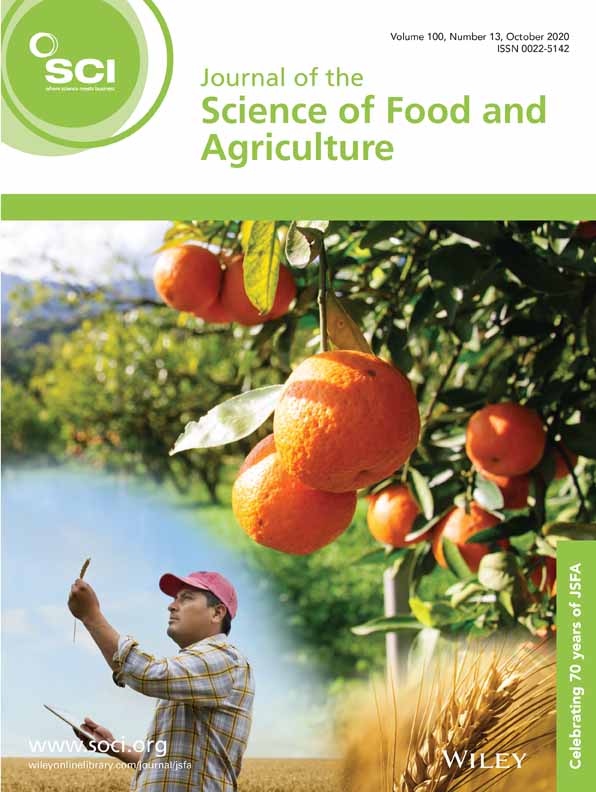Ver ítem
- xmlui.general.dspace_homeCentros Regionales y EEAsCentro Regional Mendoza - San JuanEEA MendozaArtículos científicosxmlui.ArtifactBrowser.ItemViewer.trail
- Inicio
- Centros Regionales y EEAs
- Centro Regional Mendoza - San Juan
- EEA Mendoza
- Artículos científicos
- Ver ítem
Effect of leaf‐to‐fruit ratios on phenolic and sensory profiles of Malbec wines from single high‐wire‐trellised vineyards
Resumen
BACKGROUND: The single high‐wire system is a free canopy trellis system suitable for warm to hot climates. In a global warming scenario, it arouses as a technological solution since it prevents berry overheating and sunburn. Canopy management practices manipulate leaf‐to‐fruit ratios, affecting berry and wine composition. We aimed to evaluate the phenolic and sensory profiles of Malbec wines from single high‐wire trellised vineyards in a hot region in
[ver mas...]
BACKGROUND: The single high‐wire system is a free canopy trellis system suitable for warm to hot climates. In a global warming scenario, it arouses as a technological solution since it prevents berry overheating and sunburn. Canopy management practices manipulate leaf‐to‐fruit ratios, affecting berry and wine composition. We aimed to evaluate the phenolic and sensory profiles of Malbec wines from single high‐wire trellised vineyards in a hot region in Mendoza (Argentina) and to assess the effect of varying leaf‐to‐fruit ratios on these attributes. We manipulated leaf‐to‐fruit ratios by varying shoot trimming (experiment 1: 0.45 m, 0.80 m, and untrimmed) and winter pruning severity (experiment 2: 16, 24, 32, and >32 countable buds per meter). We characterized wine attributes by a descriptive analysis, color by the CIELAB space, and global phenolics compounds and anthocyanins by high‐performance liquid chromatography with diode array detection.
RESULTS: We found that wines where shoots were trimmed to 0.80 m or left untrimmed had similar and greater intensity of color, violet hue, astringency, and alcohol and a richer aroma profile than wines where shoots were trimmed to 0.45 m. Meanwhile, wines from 16 and >32 buds/m treatments (the latter simulating a box pruning) were similar to each other and had higher color intensity, violet hue, acidity, alcohol, and astringency and a more complex aroma profile than the other pruning treatments.
CONCLUSIONS: The best quality wines were achieved by leaving 16 or >32 buds/m and by trimming shoots to 0.80 m or leaving them untrimmed. The modulation of cultural practices in sprawling canopies offers the potential to produce wines with different styles in hot regions.
[Cerrar]

Autor
Ahumada, Gastón E.;
Catania, Anibal Alejandro;
Fanzone, Martín Leandro;
Belmonte, Marcelo J.;
Giordano, Carla Valeria;
Gonzalez, Carina Veronica;
Fuente
Journal of the Science of Food and Agriculture (First published: 24 August 2020)
Fecha
2020-08
Editorial
Wiley
ISSN
0022-5142
1097-0010
1097-0010
Formato
pdf
Tipo de documento
artículo
Palabras Claves
Derechos de acceso
Restringido
 Excepto donde se diga explicitamente, este item se publica bajo la siguiente descripción: Creative Commons Attribution-NonCommercial-ShareAlike 2.5 Unported (CC BY-NC-SA 2.5)
Excepto donde se diga explicitamente, este item se publica bajo la siguiente descripción: Creative Commons Attribution-NonCommercial-ShareAlike 2.5 Unported (CC BY-NC-SA 2.5)

